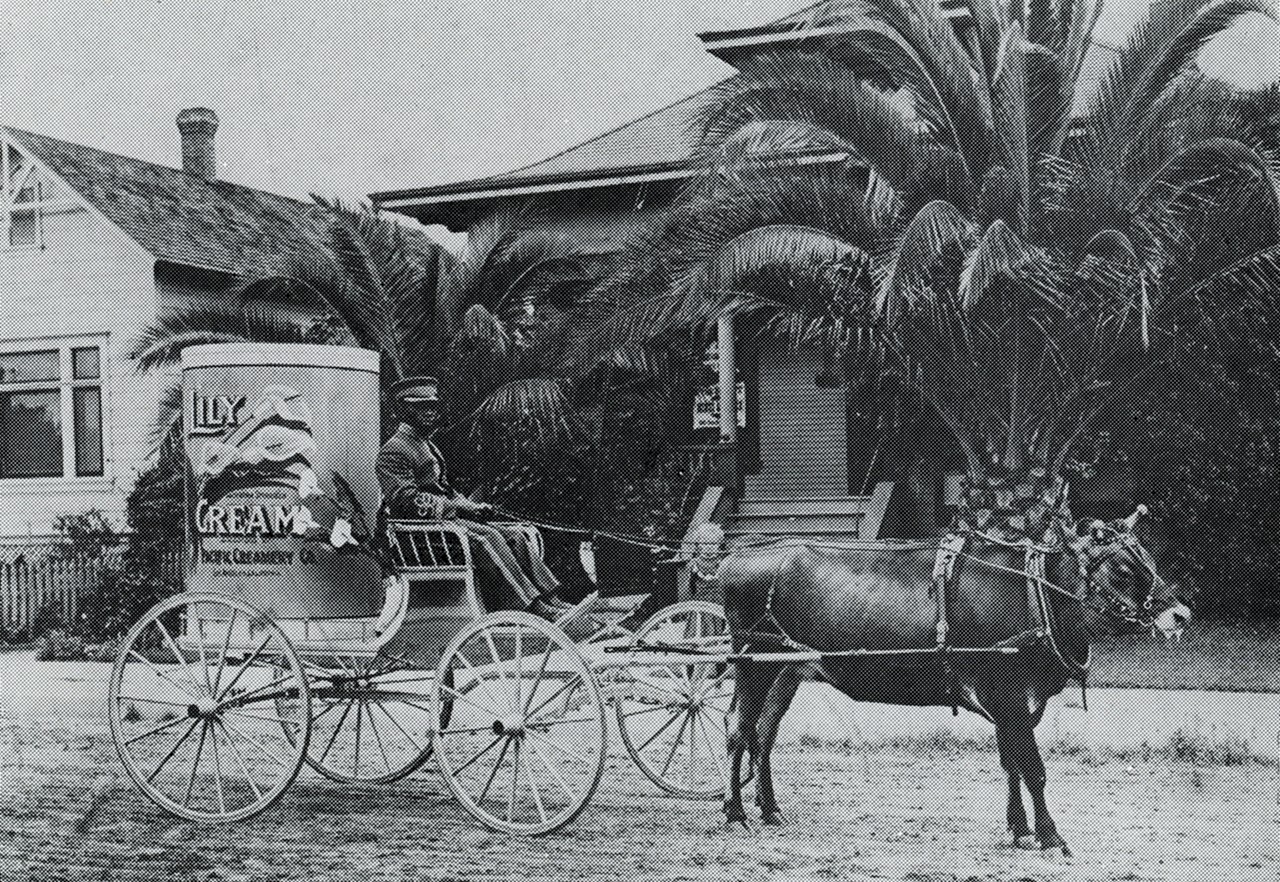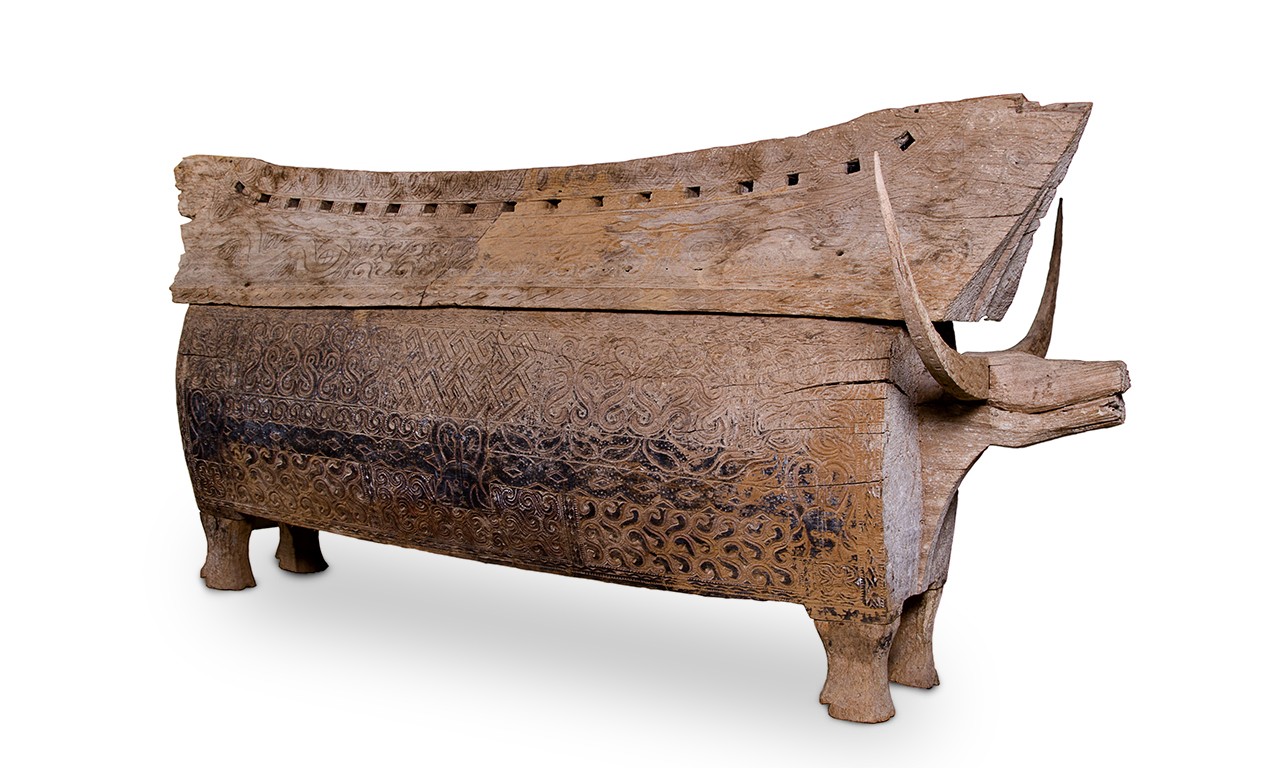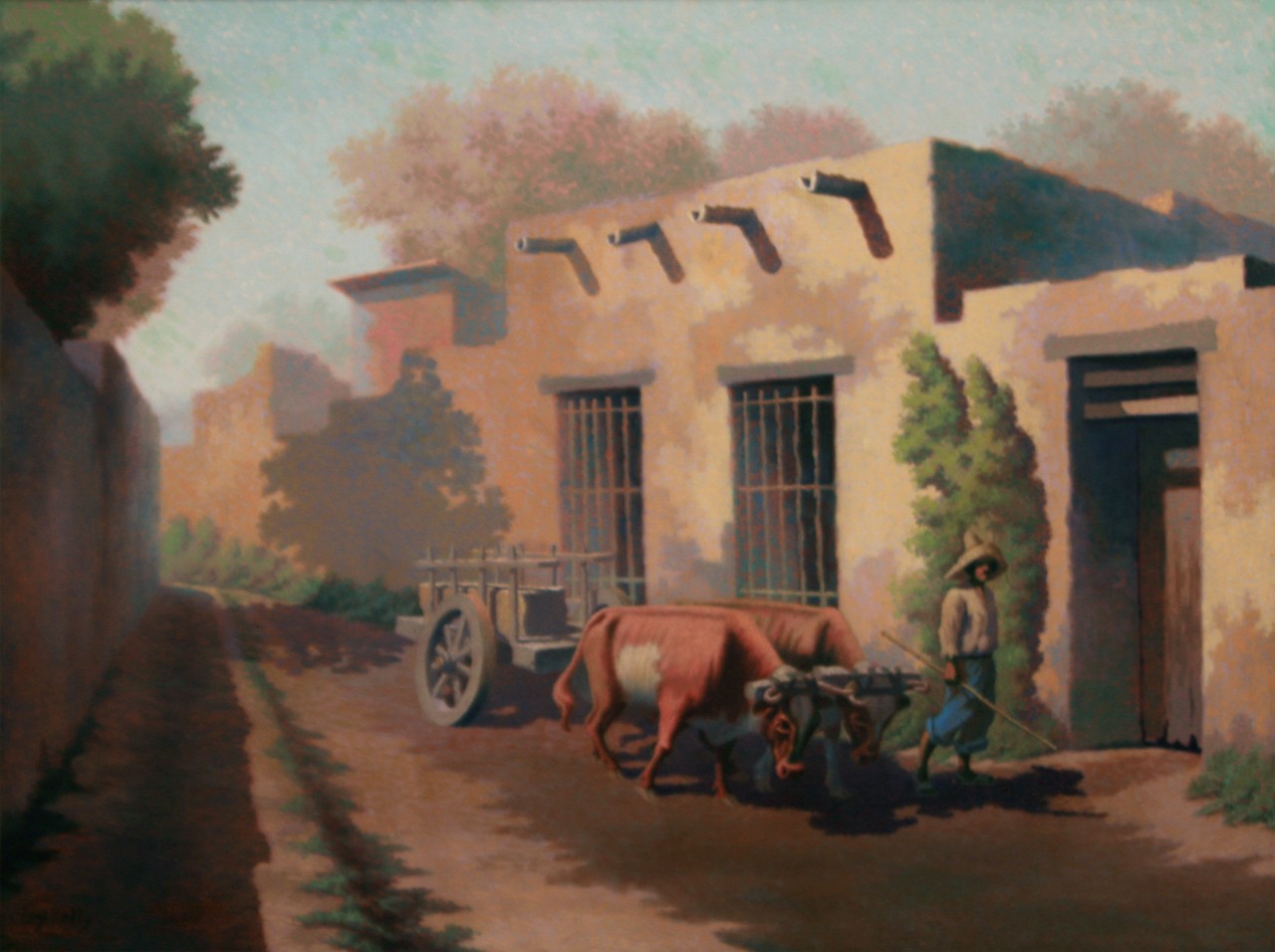© 2023 Kreativa. All rights reserved. Powered by JoomShaper
An Ox-spicious Moo Year Post
 |
| Detail of Untitled (Mexican Men with Ox Cart), early 20th Century Clay Kelly (American, 1874-?); Mexico Pencil on paper; 4 1/2 x 11 in. 33317.31 Gift of Mrs. Clay Kelly |
Legen-Dairy Creatures
Earlier in this month the Bowers Museum celebrated the Chinese New Year with our Virtual Chinese New Year Festival for which we are having an encore showing this upcoming weekend. The turn of the New Year means that on February 12 we exited the Year of the Rat and entered the Year of the Ox. One of the many origin myths to the Chinese zodiac is that the twelve-year cycle of animals was constructed based on a race that was held by the Jade Emperor, a creator divinity. In the race, the ox came in second because of its ability to swim and move on land. Those born in the year of the ox are noted for being resilient, calm, and dependable, if fairly stubborn. While in English “ox” usually refers to a castrated bull used as a draft animal, the Chinese character translates to any bovine animal, including water buffalos. In this post we look at some of the Bowers own bovine-themed objects.
 |
| Lily Creamery Wagon, c. 1905 Unknown Photographer; Buena Park Photographic print; 7 3/4 x 10 3/8 32406A Gift of Pioneer Press |
Creaming the Competition
Though the depicted oddity was first used as an early 20th century advertisement for the Lily Creamery in Buena Park, it remains distinctive over a century later for the rare sighting of a Jersey-cow-drawn wagon pulling a jumbo-sized can of cream. The Pacific Creamery Co. had a factory located in Buena Park which processed the product of over 200 individual dairies throughout the region. It was a major industry in the city and perhaps the largest supplier of canned cream in the region. The cart was more than just print advertising though. Anecdotal accounts decades after the Pacific Creamery Co. hung up its hooves mention that the wagon was a common sight throughout Los Angeles and Orange Counties, meaning that the gimmick was quite effective.
 |
| Sarcophagus (Erong), early 19th century Torajan culture; Sulawesi, Indonesia wood; 46 1/2 X 37 X 104 in. 2004.42.1 Gift of Mr. Larry Camp |
The Bovine Beyond
Historically, nobility and wealthy members of Toraja society had large sarcophagi or erong fashioned for themselves out of wood. This coffin is carved in the shape of a water buffalo which were symbols of protection, status, and wealth. Water buffalo were usually slaughtered to mark the start of a funerary feast and their horns tended to decorate homes and, in some cases, this style of erong (in the stead of the wooden horns we see here). For all these reasons and more, the creatures were inseparably entwined with life and death for the Toraja.
 |
| Scenes of California, 1932 Martin Syversten (Norwegian-born American, 1874-1947) and Karl Schabell (American, b?-d?); Santa Ana, California Mural painting on ceiling Bowers Museum Flour Family Gallery |
Ox-idental Décor
With thanks in large part to the mission revival style of the Bowers Museum’s historic wing, oxen feature somewhat prominently in some of the Bowers decorations. The ceiling of the museum’s Fluor Gallery is well known as a painting by Martin Syversten and his assistant Karl Schabell and depicts many scenes from early California history. One of these shows a group of pioneers with covered wagons being pulled by oxen. A similar scene of an ox-drawn wagon is carved into the stones of the Ada E. Bowers Memorial Fountain in the museum’s Key Courtyard.
 |
| House Panel, early 20th Century Nagaland, India Wood and pigments; 132 x 25 x 3 in. 2005.4.2 Gift of Mr. Mike Glad |
Moo-Rung
Large panels such as this were originally installed in Tangkhul Naga morung—essentially small citadels. Male warriors would both sleep and store their weapons and headhunting trophies there. Bigger villages could have more than one morung with these panels, and chiefs could also have these large panels in their houses. The large figures at the bottom of the panels are horns symbolizing water buffalo. Even though they are the animal that is globally most used to assist in farm labor, the Naga hunted wild buffalo which could be quite dangerous due to their immense strength.
 |
| Untitled (Mexican Man with Ox Cart), early 20th Century Clay Kelly (American, 1874-?); Mexico Oil on canvas; 36 x 46 in. 33868 Gift of Mrs. Clay Kelly |
Clay of the Earth Ox
Clay Kelly remains one of the most difficult artists to place out of any in the Bowers, though this statement is intended somewhat more literally than one might imagine. He was born in 1874 and spent most of his life working as a commercial artist and eventually as an art teacher, living in San Francisco and Chicago and traveling as often as he could get the chance. However, in 1937—also the year of the ox—he demonstrated a not-so-ox-like tendency and mysteriously disappeared off the face of the earth. Even a ten-year manhunt prompted by his wife did not turn him up and it is unknown what happened to date. Cows and other bovids appear with a relative frequency in his sketches and drawings. The two featuring oxen in this post are the result of a series of sketches and paintings that he made down in Mexico, but others can be linked to working with commercial dairy interests.
Here’s to the stalwart strength of the ox carrying us through what promises to be another interesting year!
Text and images may be under copyright. Please contact Collection Department for permission to use. References are available on request. Information subject to change upon further research.

Comments 3
What an interesting and varied collection showcasing a domesticated animal that is so important to many cultures past and present. Again, Mr. Bustamante has highlighted the extensive collection of Bowers Museum with a timely nod to a celebrated holiday and educated his readers about art and culture. Truly, Mr. Bustamante's weekly blogs make the Bowers Museum mission a reality: "The Bowers Museum enriches lives through the world's finest arts and cultures." I so enjoy reading the Thursday blog.
Mark, thanks so much for your Weekly Blogs. I especially enjoyed this one as I am one of those "OX" people.
Hello Mark:
Very interesting, as always. Your ability to tie different artifacts into a theme and finding all the ones you want is quite impressive.
I'm planning a project of may own for which I could use your help. Could you email me at the address below and I can tell you what I have in mind.
Thank you so much